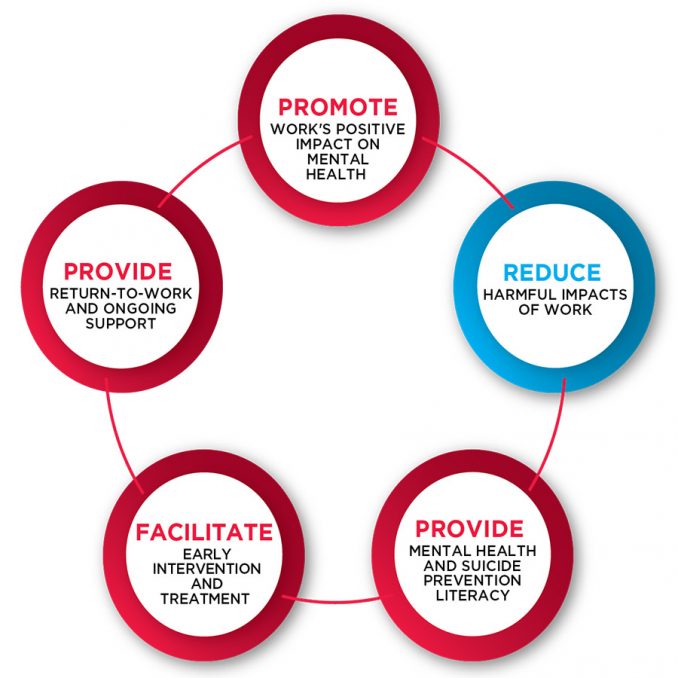Reducing harmful impacts of work
BLUEPRINT FOR BETTER MENTAL HEALTH IN THE BUILDING AND CONSTRUCTION INDUSTRY.
HOW CAN YOU REDUCE THE HARMFUL IMPACT OF WORK ON MENTAL HEALTH ON SITE?
POLICY IMPLEMENTATION
Considering both work content and work context when developing policy will ensure expectations, communication, job design, role clarity, fatigue, rosters and acceptable interpersonal behaviour will all be considered.
SUPERVISORY STAFF
Supervisors should be trained to understand their roles and expectations in the implementation of site and business policy and Manager Assistance Programs.
PEER SUPPORT
Peer support programs should be implemented in order to positively impact workplace culture and create clear pathways to help. Peer support networks in the workplace can also positively inform policy and supervision practices.
HAZARD MITIGATION
Harmful impacts on site should be reduced—for example, reducing excessive workplace stress and offering debriefing and support following critical incidences or a suicide to minimise ongoing effect on the workforce.
PREVENTION
Worksites in high-risk areas should prevent access to the site by the public to reduce suicides on site. Sites/workplaces should pre-plan intervention processes to ensure a support strategy is implemented immediately following any traumatic event on site.
CONNECTION
On remote sites, it is important to ensure adequate communications facilities, family-friendly rosters, camp activities and peer support is in place to mitigate the sense of disconnection felt by many FIFO/ DIDO workers.
